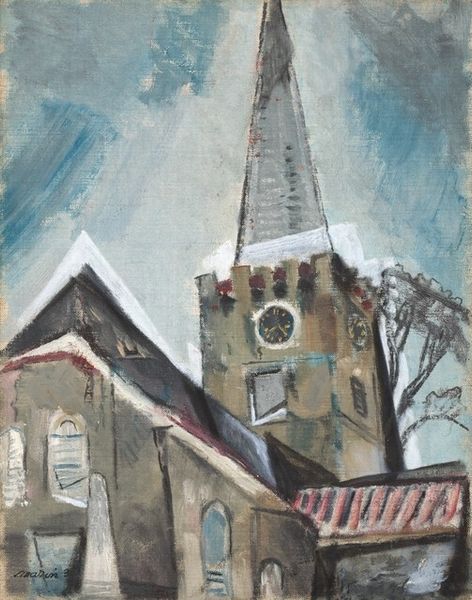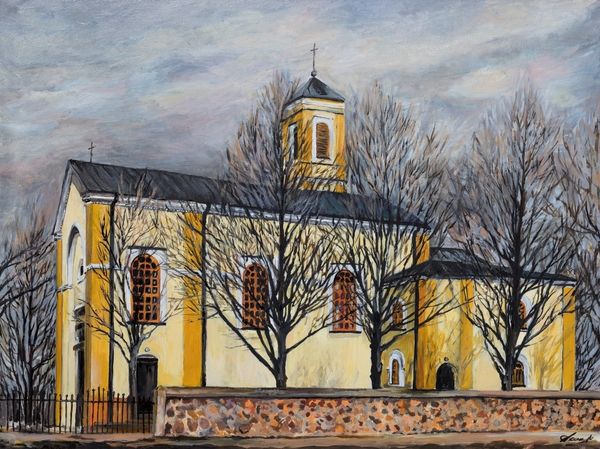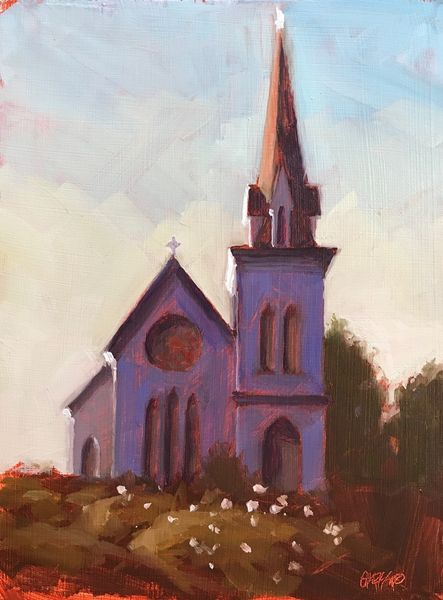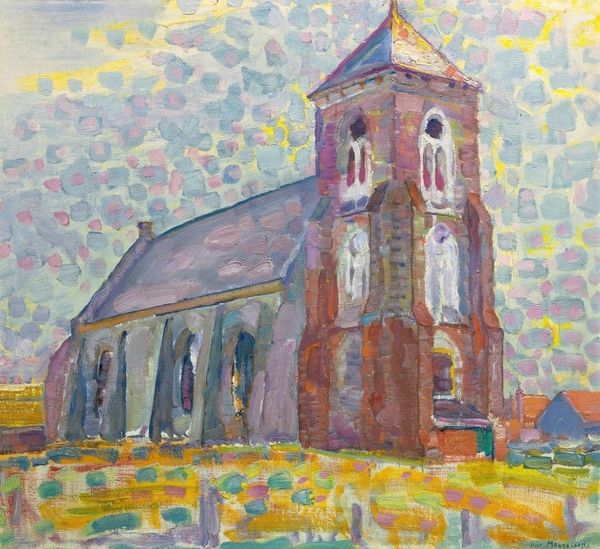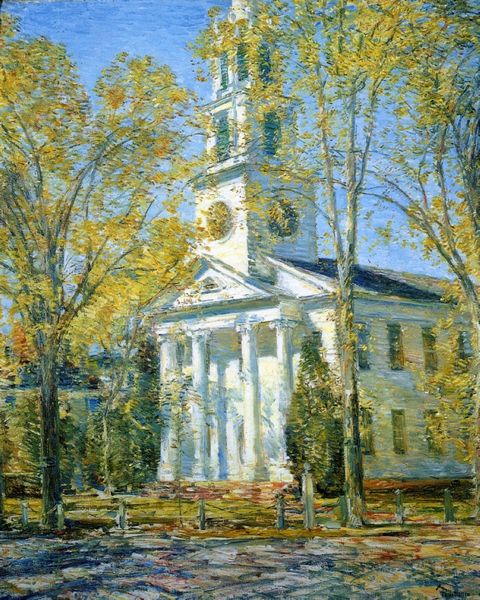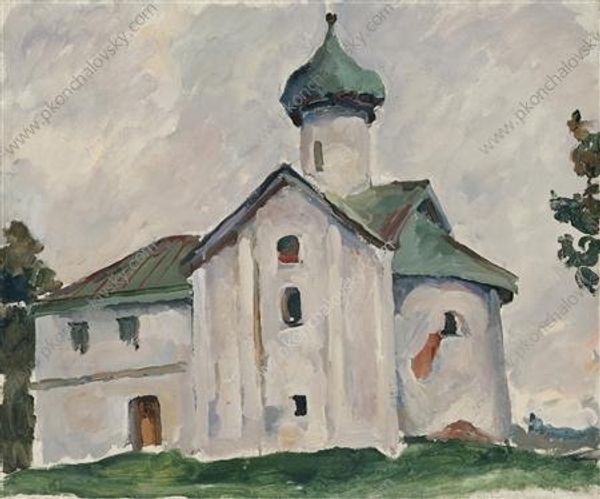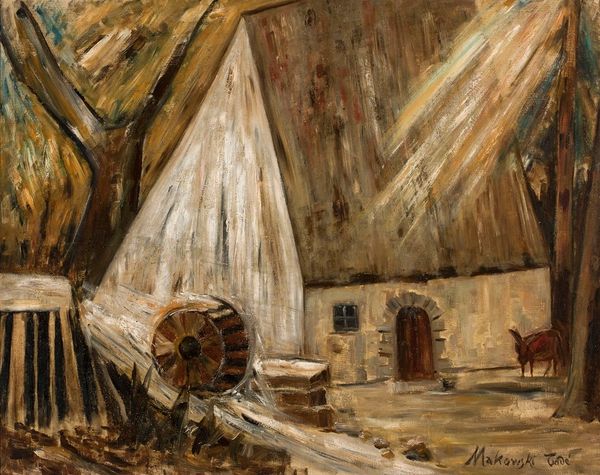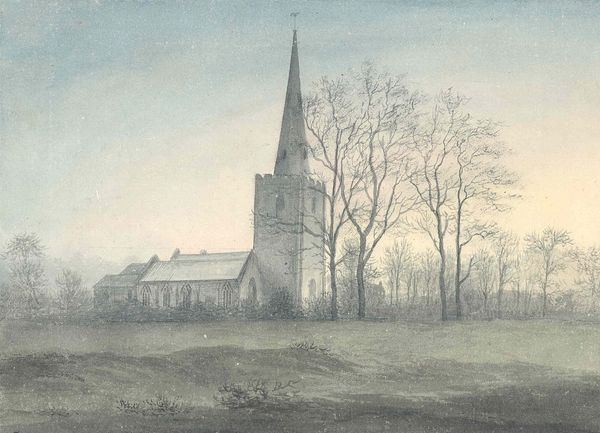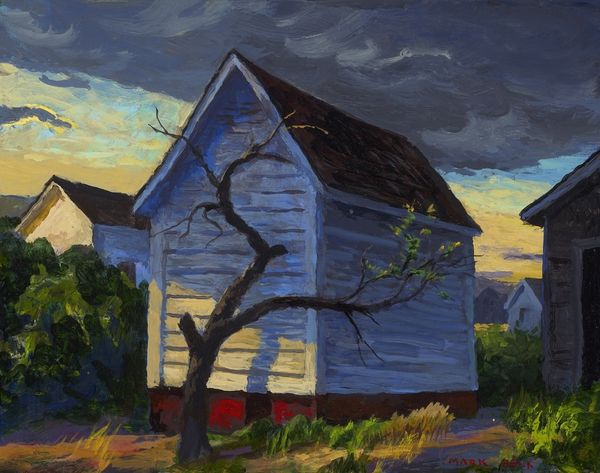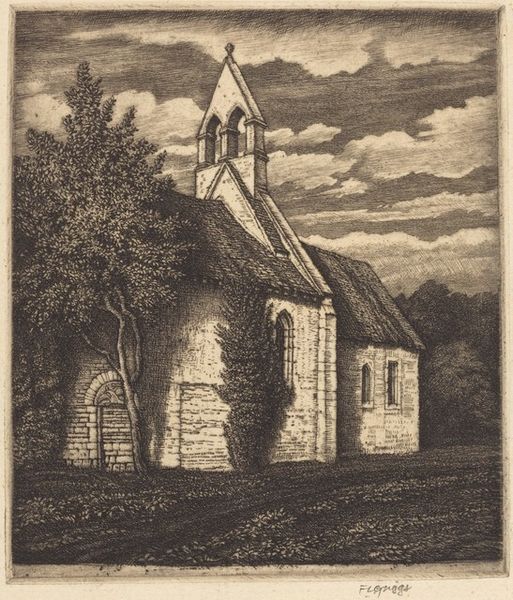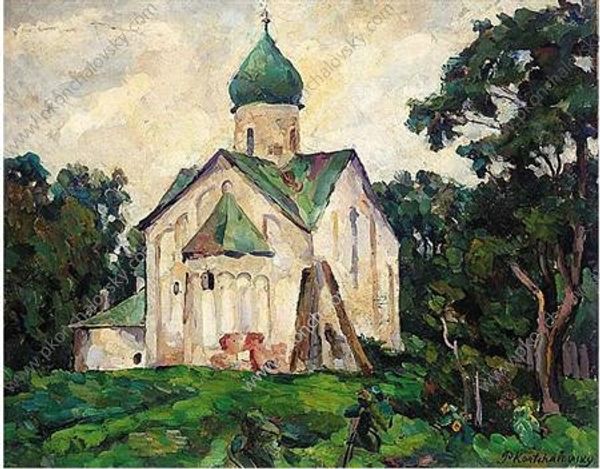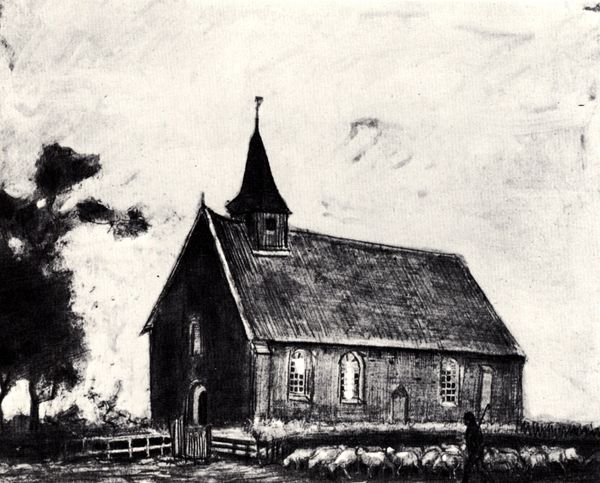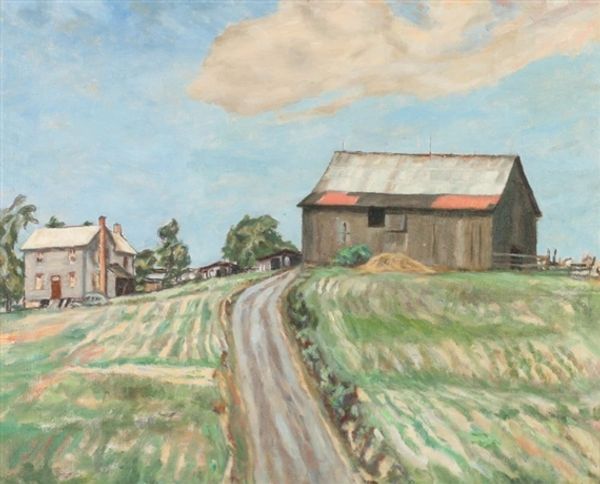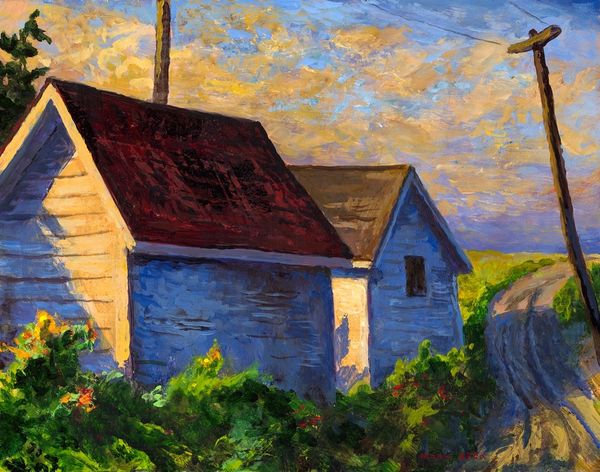
painting, oil-paint
#
painting
#
oil-paint
#
landscape
#
oil painting
#
united-states
#
cityscape
#
modernism
Dimensions: 37 1/4 x 31 1/4 x 2 1/4 in. (94.62 x 79.38 x 5.72 cm) (outer frame)28 x 21 7/8 in. (71.12 x 55.56 cm) (panel)
Copyright: No Copyright - United States
Curator: Marsden Hartley's "Church at Head Tide #2," created between 1938 and 1940, greets us here at the Minneapolis Institute of Art. What impressions does it leave you with? Editor: The first thing that strikes me is the geometry, or rather, Hartley's slightly off-kilter rendering of it. There's a subtle distortion in the perspective, especially in the church's facade, which creates a strange tension. Curator: Indeed. The church stands as a prominent symbol of community, spirituality, and steadfastness, wouldn't you agree? But look closer at the overcast sky and muted palette—Hartley is subtly complicating that idealized image. Editor: I agree; the color story reinforces that tension I noticed. Notice the deliberate contrast of the brilliant white against the more turbulent, almost oppressive, grays in the sky. The materiality itself—the visible brushstrokes in the oil paint—add to a raw quality. Curator: Beyond the building itself, observe the twin headstones which sit, almost like guardians, in the foreground of dry grasses, under the church. In a traditional European reading of a church within landscape you might call the image “sublime.” In an American context—what feelings might it elicit? Editor: Are you suggesting that the landscape is an intentional element? Because what’s remarkable to me, in formal terms, is how that foreground seems flattened. Hartley uses very little modeling to create depth. Curator: I am. We should remember that after several years abroad, Hartley actively refashioned himself as a regionalist painter rooted in his native Maine. There’s a stark, almost unsettling quality here, reflecting a search for American identity beyond idyllic representations. Editor: That's a wonderful point. He uses these fairly crude brushstrokes to depict this icon of stability. I think there is great honesty here and no varnish. Curator: Exactly. Perhaps Hartley suggests that the church, and what it symbolizes, stands guard over the quiet inevitability, a permanent structure above that which passes from this world. Editor: This has given me a new appreciation for Hartley’s choices in this work. The tension I initially perceived isn’t a flaw but a conscious strategy for conveying complex ideas about faith, identity, and mortality. Curator: And I think your close attention to brushstroke and geometry helps reveal the symbolic weight that Hartley is able to subtly place within the painting.
Comments
No comments
Be the first to comment and join the conversation on the ultimate creative platform.
